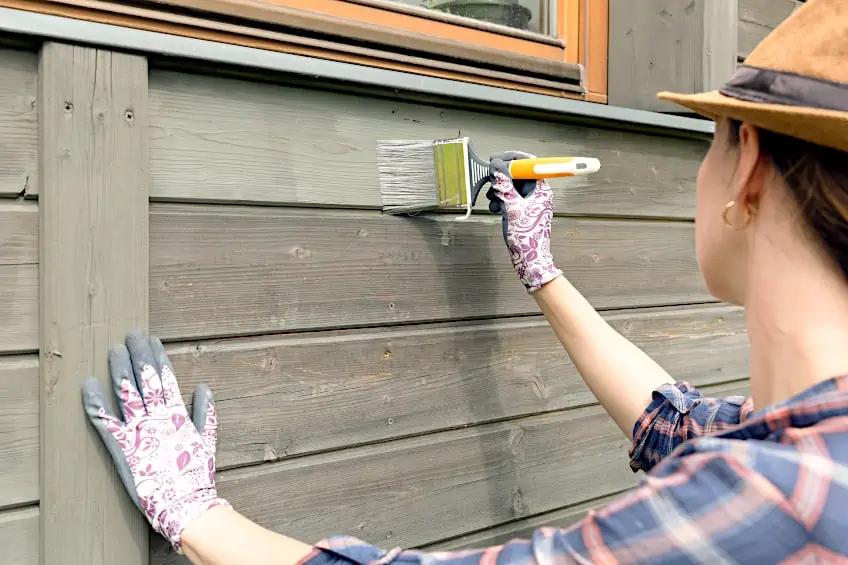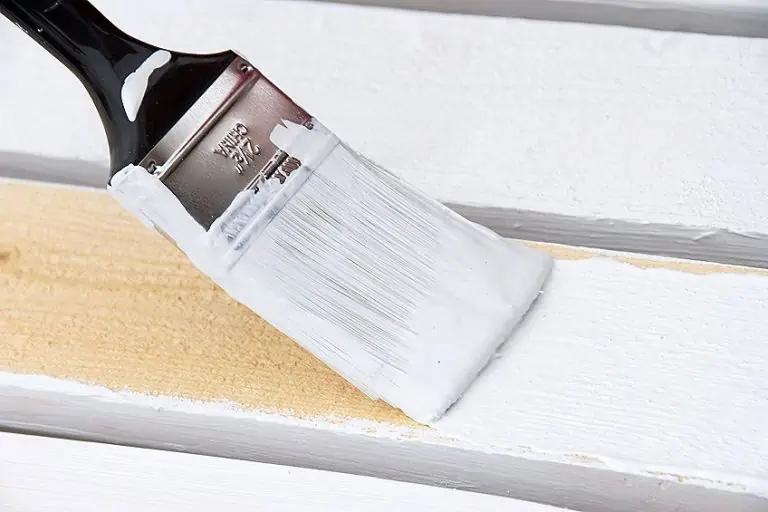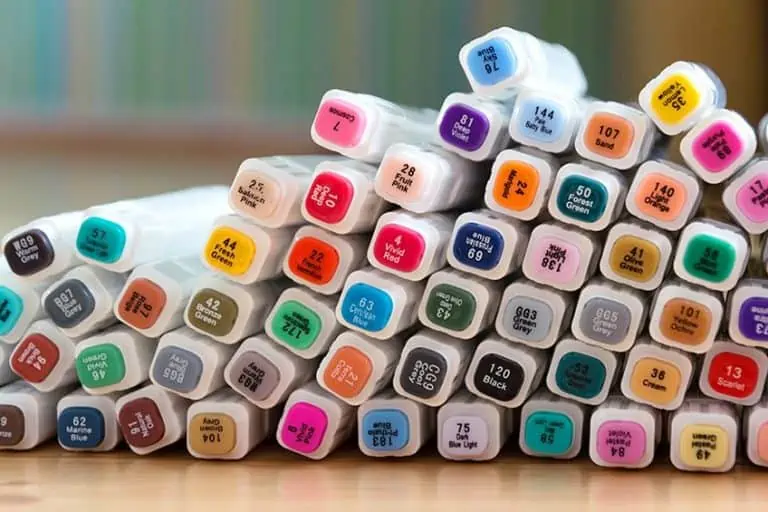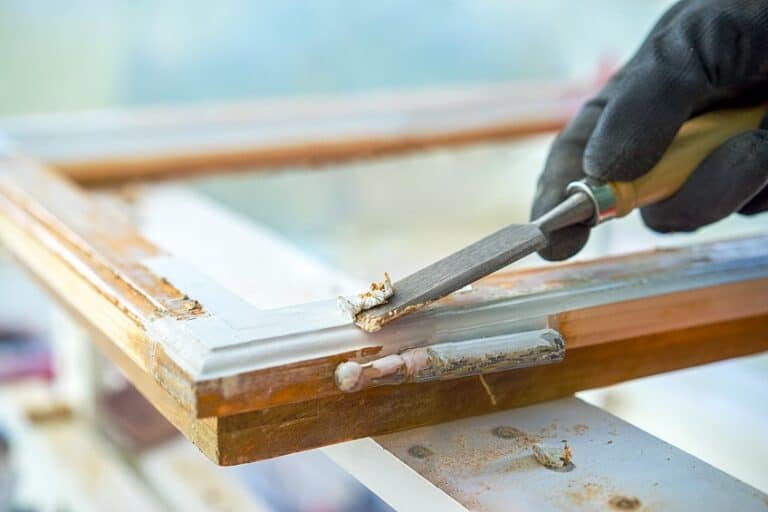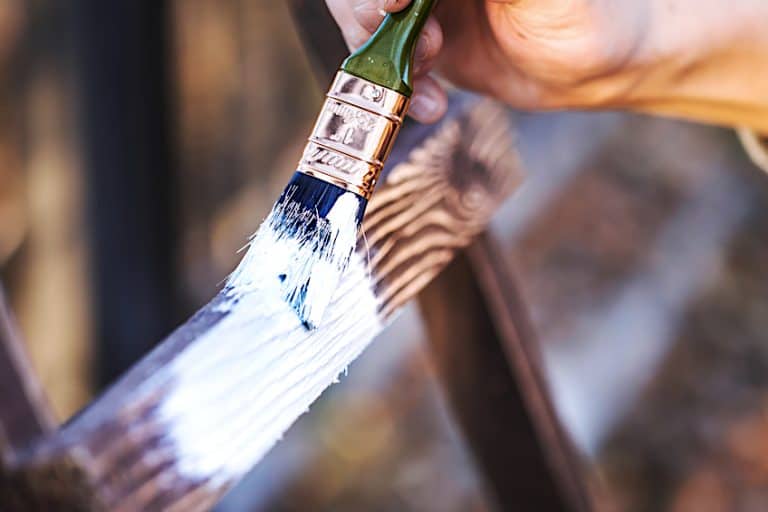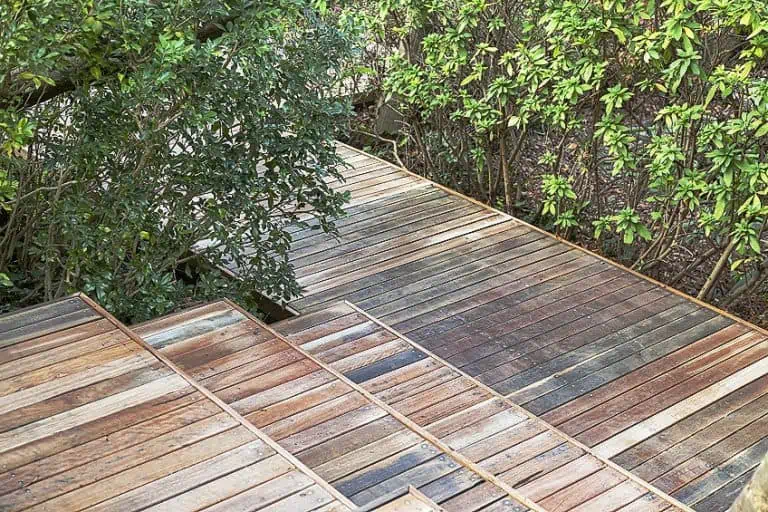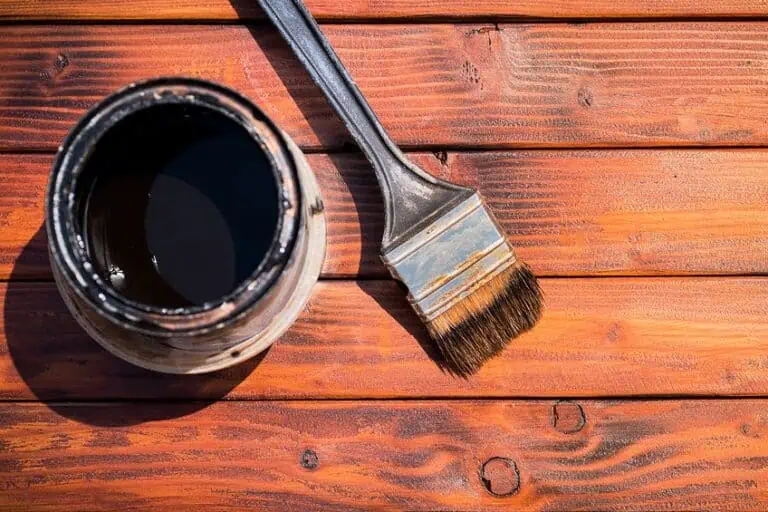Priming Pressure-Treated Wood – Tips for Priming Treated Wood
Pressure-treated wood is a great material to use for furnishing and décor. This is thanks to the fact that pressure-treated wood can resist the onset of decay fungi and withstand the elements. If you have selected pressure-treated wood and you want to paint it there are certain elements you will have to consider before you can begin.
Table of Contents
- 1 How to Paint Pressure-Treated Wood
- 2 Tips and Tricks
- 3 What Is Pressure-Treated Wood?
- 4 Frequently Asked Questions
- 4.1 Why Is Pressure-Treated Wood Green?
- 4.2 What Is Pressure-Treated Wood?
- 4.3 Do You Have to Paint Pressure-Treated Wood?
- 4.4 Can You Paint Wood That Has Been Pressure-Treated?
- 4.5 How Long Does It Take for Pressure-Treated Wood to Dry?
- 4.6 Do You Need to Wait for Pressure-Treated Wood to Dry Before Priming?
- 4.7 Which Is the Best Primer For Pressure-Treated Wood?
How to Paint Pressure-Treated Wood
It can prove to be a little tricky to apply paint to pressure-treated wood. The main challenge when painting pressure-treated wood is the level of moisture, which is higher. The wood needs to dry before you can apply anything to it. The amount of drying time required is impacted by the climate you are in and the moisture content of the wood. You will have to wait anywhere between a few months or just a few weeks for the timber to completely dry.
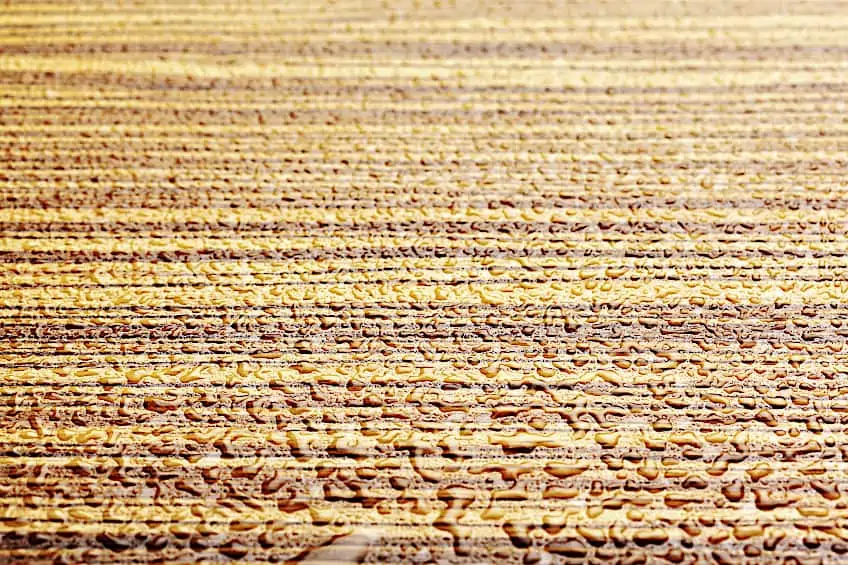
You will require some patience. If you paint on pressure-treated wood that is damp it will in all likelihood start to peel and chip shortly after it has dried. Allow sufficient time for your pressure-treated wood to dry before you begin to apply your primer or your paint.
Clean the Pressure-Treated Wood
Before applying any primer, you will need to ensure that any dirt, grease, and grime has been removed from the wood’s surface. The wood is easy to clean, just use a little soapy water and a brush. This will ensure any grime, grease, or dirt, that could potentially cause the paint to not bond properly, is removed. Once you have cleaned the surface you will have to wait for it to dry before you can begin to apply the primer and paint.
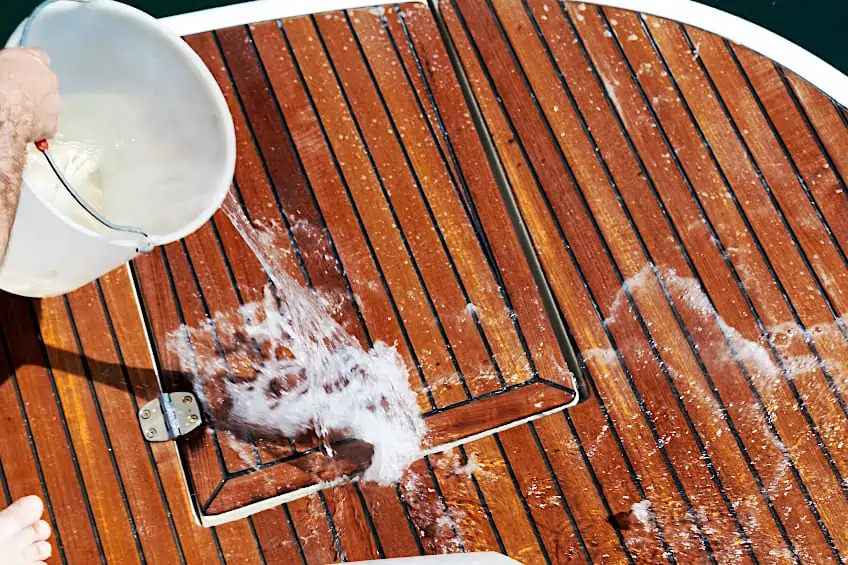
If you are working with a time limit, we recommend using pressure-treated wood that has been kiln-dried after pressure treatment. This type of wood is called KDAT.
Priming Pressure-Treated Wood
When you are thinking about painting pressure-treated wood, you will need to first apply a primer. Primer will also increase the bond of your paint to the wood. Certain primers will offer you the added benefit of covering up any marks like knots, or stains.
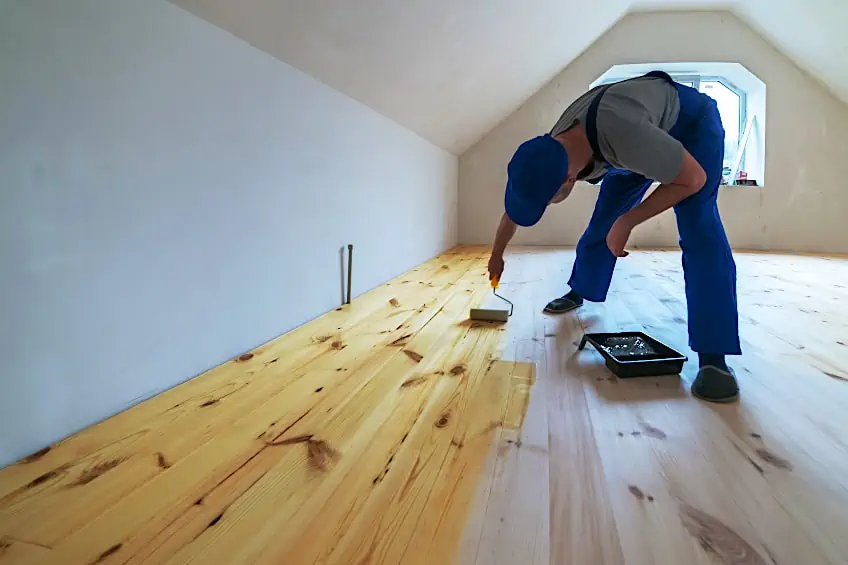
If you are working with an outdoor structure like a fence you will need to choose an exterior primer for pressure-treated wood. The primer will need to dry completely once it has been applied. On average it will take roughly a day for the primer to dry.
Painting Pressure-Treated Wood
Once the primer has completely dried you will be able to apply paint as a topcoat. For wood, we recommend using latex paint, as it works best. To ensure a smooth finish with good coverage you should apply serval layers. You can apply the primer using a spray gun, brush, or roller, whichever you prefer. The manufacturer’s instructions will outline the curing time and drying time.
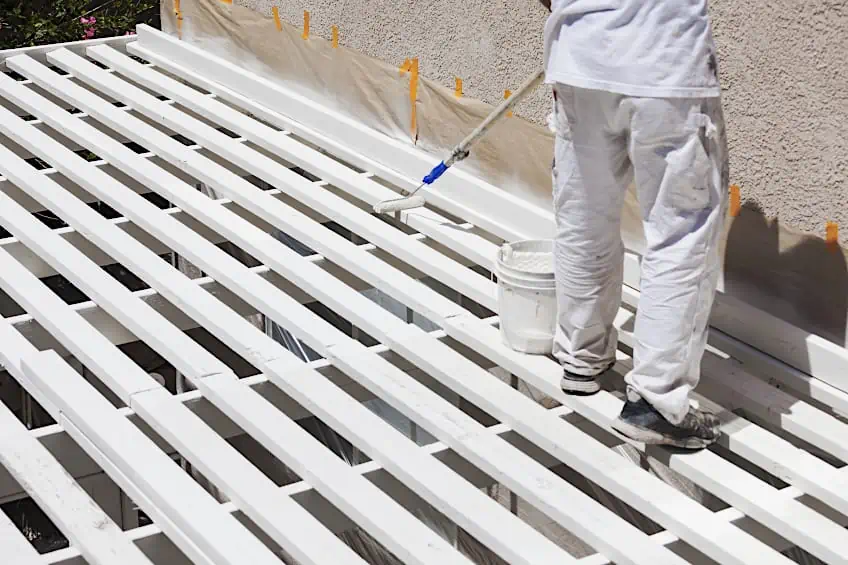
It is important to note that horizontal surfaces such as decks are subject to more day-to-day damage. You might want to think about using an exterior wood sealer on a horizontal surface as opposed to painting. However, ideally, you should paint fences as they are not exposed to the element in the same way that horizontal decks are. Certain products will even offer you UV stabilization which ensures additional topcoat strength.
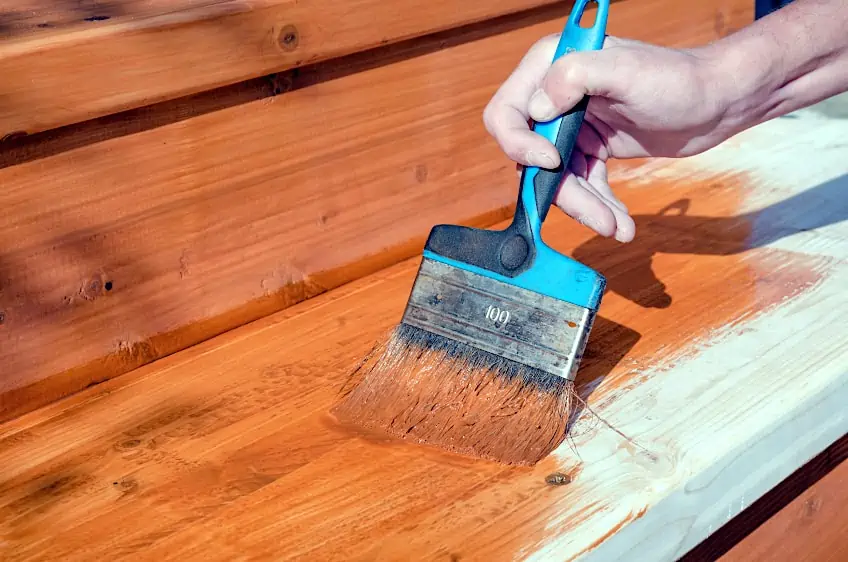
Tips and Tricks
- It is imperative that you wait until pressure-treated wood is completely dry, as it is inherently damp before you can start to apply any primer or paint. If your pressure-treated wood is still wet when you apply the primer the coat will not adhere adequately.
- You can choose to use kiln-dried wood, should you wish to seep up the process. As this form of wood, you will not have to wait for it to dry. This form of wood has a much lower moisture content than standard pressure-treated timber.
- You can choose to use a primer that has a built-in fungicide as extra protection. This added protection will ensure the wood is not susceptible to decay fungi, while also resisting mildew and mold. These forms of primers and paint are perfect for use in humid climates and use on exterior structures.
- You can add longevity to our coating by applying water repellant to your freshly painted exterior wood. The majority of these products offer an added level of UV protection that protects the surface from the sun’s harsh rays.
- If you are looking to apply paint to your wooden decking you will need to choose a sealer. Using an exterior sealer will allow the wood’s natural beauty to show whilst also protecting from the elements. These types of sealers normally have a built-in primer and can be applied with ease using either a roller or a brush.
- If you are uncertain if your pressure-treated wood is dry, you can drop some water onto the wood’s surface. If the water is absorbed into the wood, that means it is dry and you can start applying your primer and paint. If the water droplet remains on the surface forming a little bead, then the wood is still wet and you will need to allow more time for it to dry.
- We recommend wearing gloves when you are working with pressure-treated wood so that you do not get any of the chemical preservatives onto your hands. We also suggest you wear safety goggles and a respirator as the sawdust from pressure-treated timber can potentially irritate your respiratory system and your eyes.
What Is Pressure-Treated Wood?
Pressure-treated wood has been through a process that adds protection to the wood, making it resistant to insect infestations and the elements. Pressure-treated wood can withstand mold, water damage, and in certain cases even fire. We have put this article together to assist you in making an informed decision when choosing the best primer for pressure-treated wood.
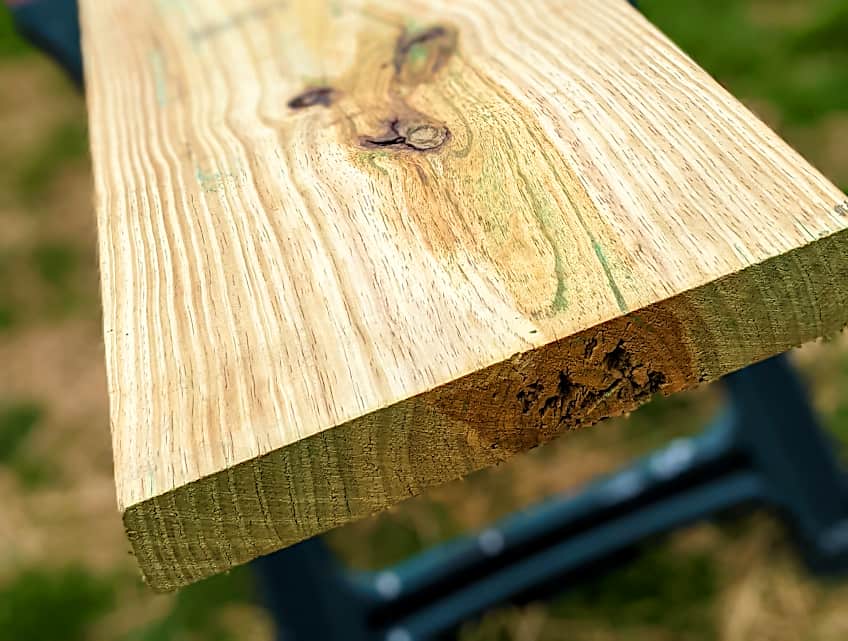
What Is Pressure Treating?
To create pressure-treated wood, the wood is placed in an airtight steel chamber and exposed to specialized chemicals. Once the wood is placed in a container, the air is then removed from the chambers. This forms a vacuum in the chamber. Next, you would need to pump treatment chemicals into the chamber. The intense pressure causes force the chemicals to move deep into the wood’s pores.

When the process is finished the wood is treated and all that you will still need to do is allow the wood time to dry and cure before using the wood. Keep in mind that pressure-treated wood may remain damp for quite some time. You will need to ensure that the wood is completely dry before you can begin applying any form of a primer, or start painting the wood.
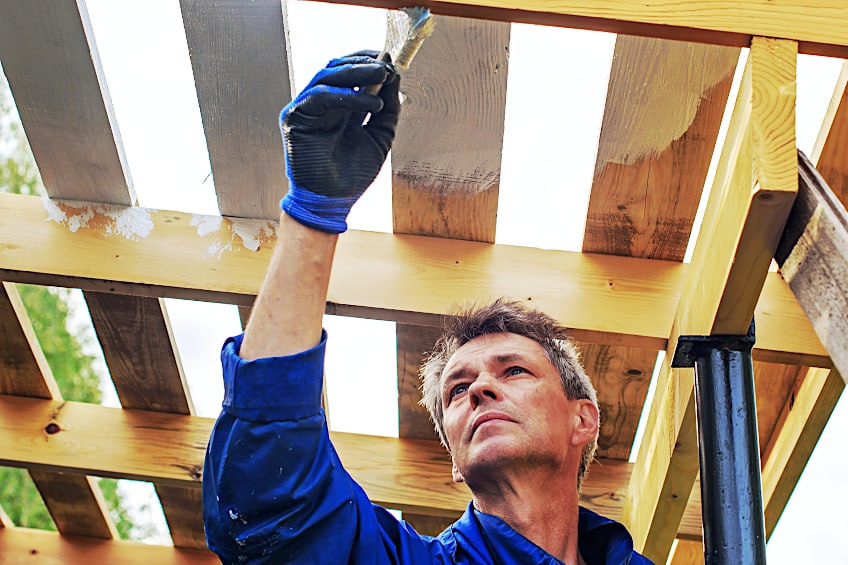
If you do not wait for pressure-treated wood to dry before painting, your paint will peel, chip, and lift off the wood’s surface.
Types of Pressure Treatment
Pressure-treated wood is available in an assortment of types. Certain types of pressure are specifically meant to ensure fire retardation. A popular pressure treatment chemical that is used for wood is Copper Azole. This particular chemical is impressive in resisting mold, fungi, and termites. In addition, this chemical is long-lasting.
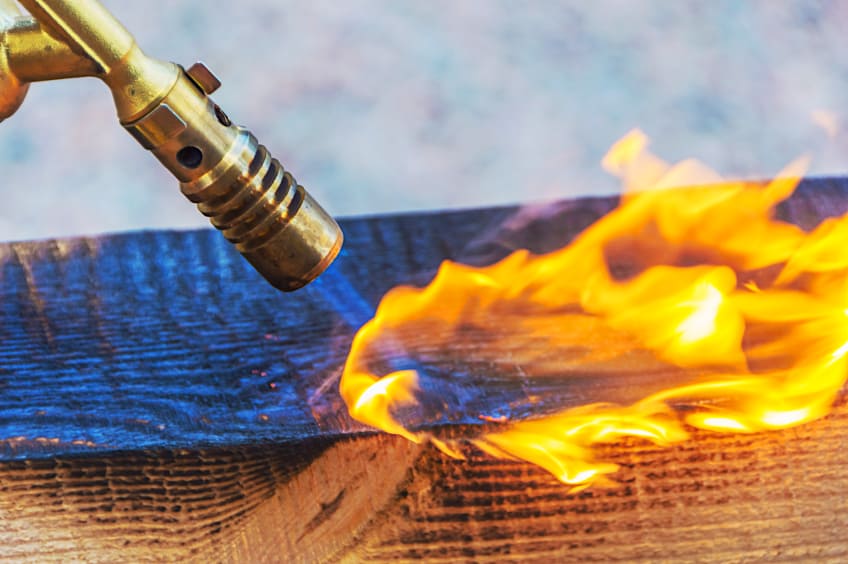
CCA or Chromated Copper Arsenate is another chemical that is used to form pressure-treated wood. This chemical has been utilized for treating wood for many years. Once the wood has been treated with CCA the timber has a green-like coloring to it. This chemical, much like Copper Azole, will provide you with protection that is long-lasting and will protect you from fungi and insects.
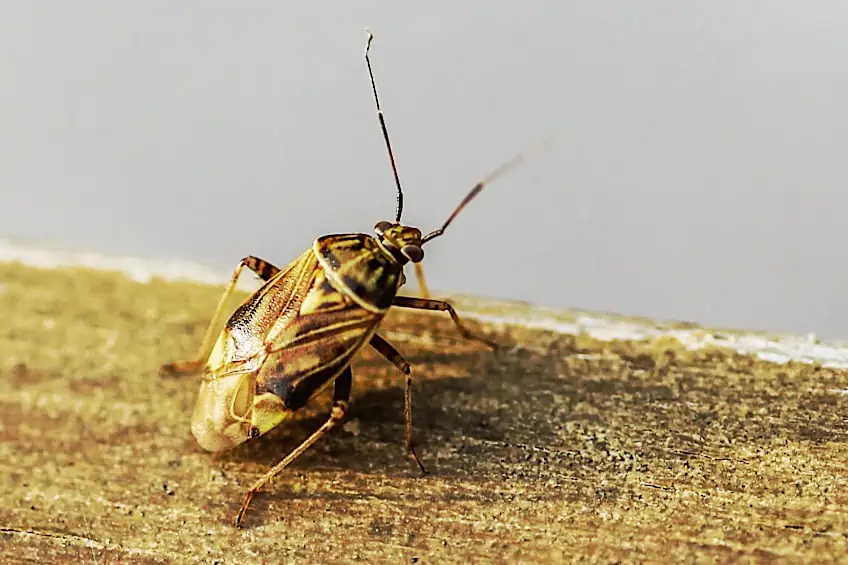
These chemicals can be used for both exterior and interior applications. Certain pressure-treated wood will undergo additional treatment in a kiln, which is called kiln-drying. Through kiln-drying you can drastically decrease the moisture content of the wood, making it significantly easier to work with. Kiln-drying will also prevent moisture-related issues such as warping and bowing.
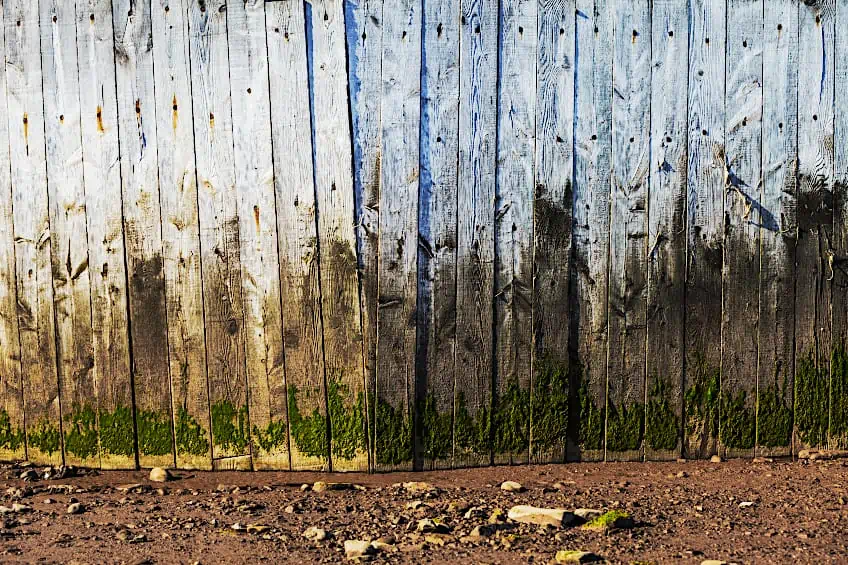
Above-ground treated wood, much like the name suggests, is used for above-ground. This means that this type of wood is not suited for use for structures such as fence posts, as the chemicals used to treat the wood will in all likelihood soak into the ground’s moisture. Ground-contact pressure-treated wood is intended to be exposed to moisture and soil (can be placed in the ground). The toughest form of treated wood is marine lumber, it can be used for seaside structures and docks.
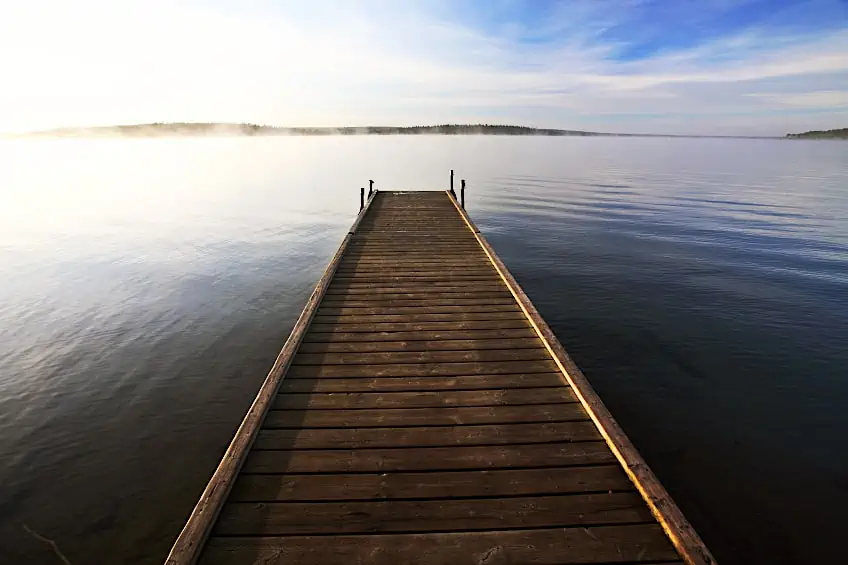
| Types of Pressure-Treated Wood | Use |
| Above-Ground Pressure-treated Wood | Perfect to be used to create above-ground structures such as window sills |
| Ground-Contact Pressure-treated Wood | Works well when used in contact with the ground such as fence posts |
| Marine Lumber | To be used for docks and seaside structures |
Pressure-Treated Wood Applications
Pressure-treated wood is a versatile material. Pressure-treated wood is graded and is marked with either a stamp or a tag. The grading will indicate the type of application that the wood is best suited for. If you have wood that has been treated with CCA (Chromated Copper Arsenate) then it is most commonly used in residential settings and can be used in both interiors and exteriors. It is most often used for constructing outdoor wood fences, decks, and structures.
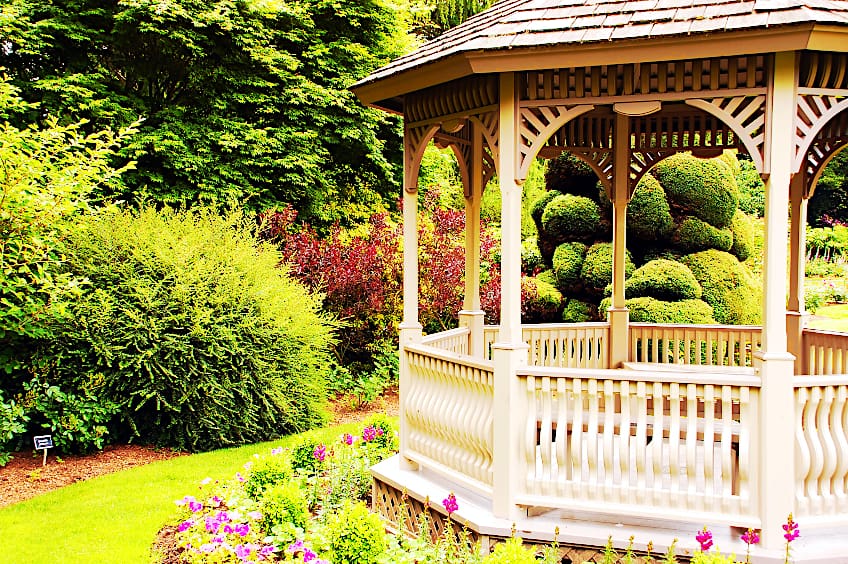
The popular choice for heavy-duty construction like structural poles and utility poles is to use wood that has been pressure-treated with Creosote.
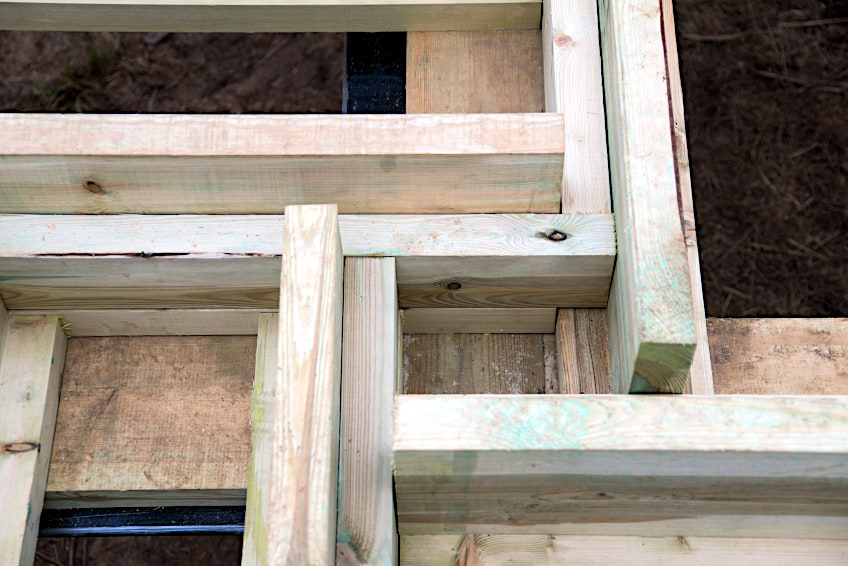
To ensure a proper bond between the wood’s surface and paint we recommend applying a primer to pressure-treated wood. This will ensure you achieve a long-lasting, even, and smooth finish. If you are working with an exterior structure, you will need to use an exterior primer for pressure-treated wood. You will receive amazing protection from the elements when using a primer that has been specifically formulated for exterior use. Remember to also wait until the pressure-treated wood is completely dry before applying any primer or paint.
Frequently Asked Questions
Why Is Pressure-Treated Wood Green?
Certain pressure-treated woods contain aspects of copper that cause the timber to turn a shade of green. The chemical is called Copper Azole and is a well-known wood preservative. The chemical prevents any insect infestation in the wood, or any rot occurring.
What Is Pressure-Treated Wood?
Pressure treated wood has been saturated in liquid chemicals whilst under intense pressure. The pressure forces the chemicals deep into the structure of the wood. These chemicals stop decaying fungi from forming and prevent insect infestations.
Do You Have to Paint Pressure-Treated Wood?
No, pressure-treated wood can be left unpainted. You receive a certain level of protection from the elements through pressure-treating timber. Instead of painting pressure-treated wood you could allow the wood to settle and dry out, and when it has completely dried you can just coat the wood in a sealer for exterior wood.
Can You Paint Wood That Has Been Pressure-Treated?
Yes, you can paint pressure-treated wood. You will, however, have to ensure the wood has dried completely before you can begin to apply any primer or paint. Once the wood has been pressure-treated it can be quite damp. The adhesion of the paint can be negatively impacted by the dampness.
How Long Does It Take for Pressure-Treated Wood to Dry?
The length of time it can take pressure-treated wood to dry varies greatly due to factors such as the environmental climate the wood has been stored in, and how long it has been at the suppliers. You may need to wait for several months for the wood to dry completely before you can begin sealing or painting the wood.
Do You Need to Wait for Pressure-Treated Wood to Dry Before Priming?
You will only be able to apply your primer or paint to your pressure-treated wood once it has dried completely. Applying paint to damp wood will compromise the adhesion of the paint.
Which Is the Best Primer For Pressure-Treated Wood?
The best primer to use on pressure-treated wood is all dependent on your project’s requirements. If you are applying primer to pressure-treated wood that will be outside, you will have to use a primer that is specifically formulated for exterior use. If you are based in a humid climate you might want to choose a primer that contains mildew and mold prevention additives.

I have been into woodworking since 2005 and woodturning since 2011. Because of my love for wood and woodworking, I started woodhappen.com to teach other enthusiasts about how to finish and seal wood, the best woodworking tools, the different types of wood, and everything else related to woodworking! Read more about me here.

